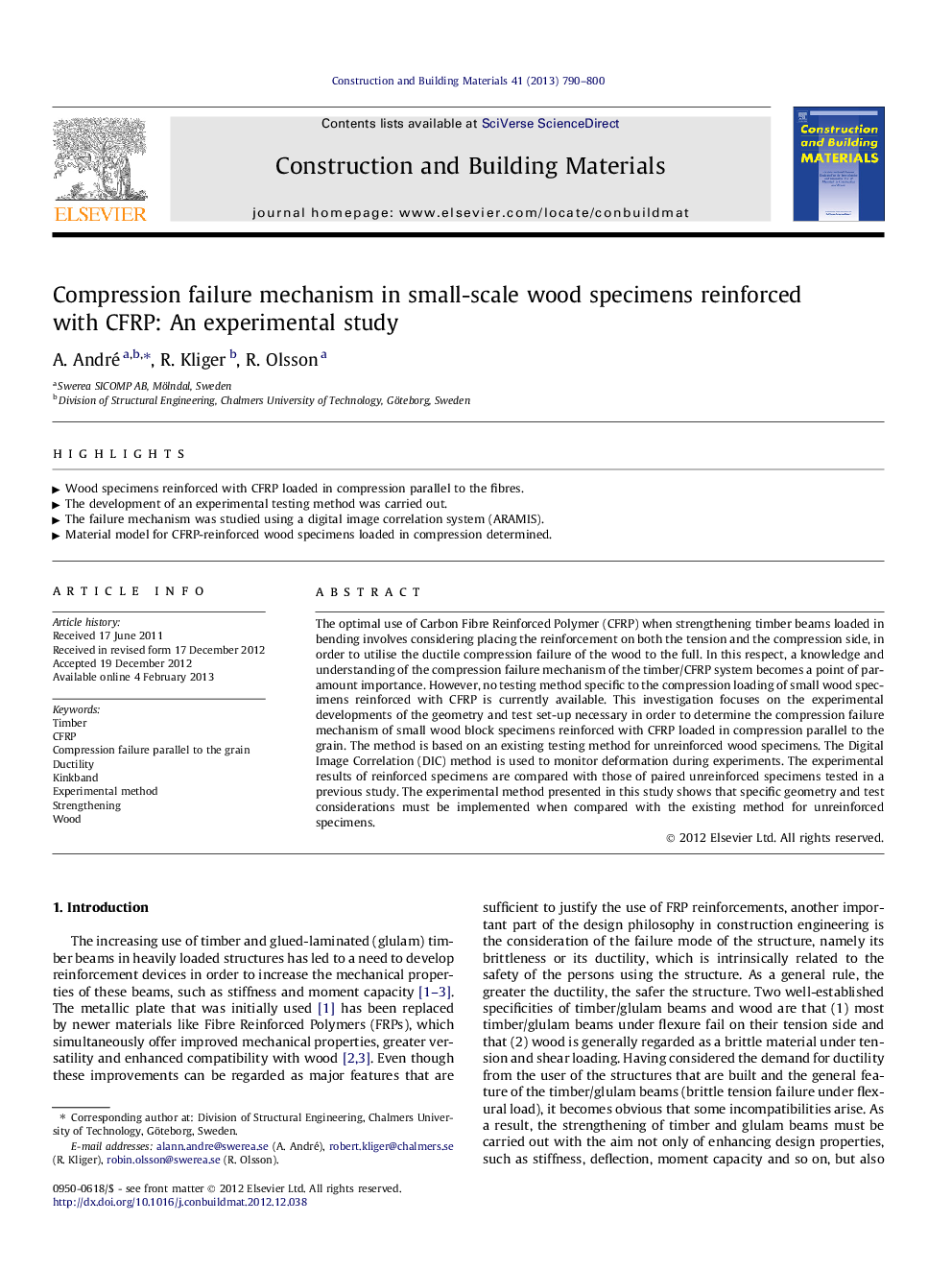| Article ID | Journal | Published Year | Pages | File Type |
|---|---|---|---|---|
| 258451 | Construction and Building Materials | 2013 | 11 Pages |
The optimal use of Carbon Fibre Reinforced Polymer (CFRP) when strengthening timber beams loaded in bending involves considering placing the reinforcement on both the tension and the compression side, in order to utilise the ductile compression failure of the wood to the full. In this respect, a knowledge and understanding of the compression failure mechanism of the timber/CFRP system becomes a point of paramount importance. However, no testing method specific to the compression loading of small wood specimens reinforced with CFRP is currently available. This investigation focuses on the experimental developments of the geometry and test set-up necessary in order to determine the compression failure mechanism of small wood block specimens reinforced with CFRP loaded in compression parallel to the grain. The method is based on an existing testing method for unreinforced wood specimens. The Digital Image Correlation (DIC) method is used to monitor deformation during experiments. The experimental results of reinforced specimens are compared with those of paired unreinforced specimens tested in a previous study. The experimental method presented in this study shows that specific geometry and test considerations must be implemented when compared with the existing method for unreinforced specimens.
► Wood specimens reinforced with CFRP loaded in compression parallel to the fibres. ► The development of an experimental testing method was carried out. ► The failure mechanism was studied using a digital image correlation system (ARAMIS). ► Material model for CFRP-reinforced wood specimens loaded in compression determined.
